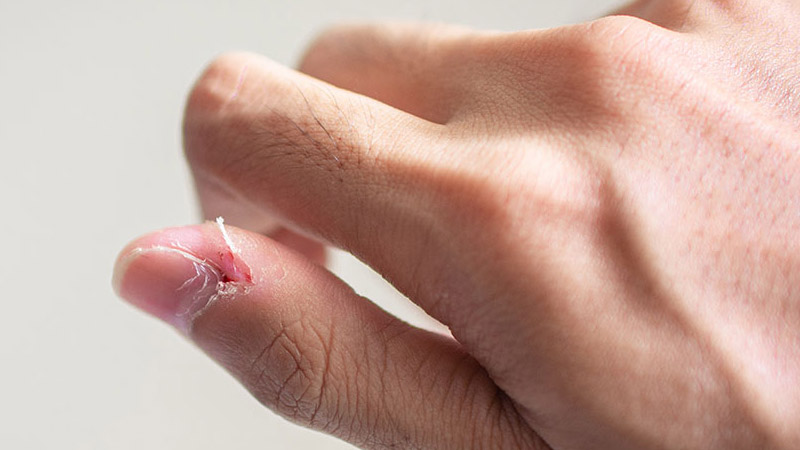
Peeling Skin Around Your Nails Ruining Your Manicure? Here’s How to Fix It and Prevent Pain
Share0Having the perfect manicure can be less satisfying if the skin around your nails is peeling. This not only detracts from the aesthetic of even the most intricate nail art but can also lead to discomfort and irritation. More severely, if the skin is tampered with or picked at, it can result in pain and further damage.
Peeling skin around the nails can stem from a variety of causes. Some of these are within our control, such as excessive hand washing or the use of harsh sanitizers, which strip moisture from the sensitive skin in this area. Similarly, frequent exposure to cleaning chemicals and other irritants can dry out the skin, leading to peeling. Fortunately, making simple changes, such as reducing these exposures, can often alleviate the problem.
However, if lifestyle adjustments do not resolve the issue, it might be indicative of an underlying condition. Skin disorders like eczema and psoriasis can cause significant peeling, not just around the nails but across the hands. According to Dr. Nivedita Dadu, a dermatologist quoted by the Hindustan Times, “Psoriasis is an autoimmune condition that can cause redness, scaling, and cracking of the skin, even affecting the areas around the nails.” Other conditions such as chronic eczema, atopic dermatitis, and pompholyx also contribute to skin deterioration in these areas.
Addressing peeling skin might not just be about cosmetic upkeep but also about preventing further complications like infections, which can occur if the peeling skin is broken and left untreated. Understanding the root cause of the peeling is essential for preventing recurrence and ensuring effective treatment.
To manage dry, peeling skin around the nails, cuticle cream or cuticle oil can be highly effective. These products are usually enriched with vitamins and other nutrients that nourish the nail beds and surrounding skin. A small amount of cuticle oil, typically applied with a brush, or a dollop of cuticle cream rubbed into the area can provide relief. These treatments are ideally done at times when the hands aren’t busy, such as before bedtime, to allow the product to be absorbed fully without being rubbed off.
For more comprehensive care, hand creams containing emollients like shea butter, lanolin, glycerin, and humectants such as hyaluronic acid are recommended to soothe and repair the skin barrier. These ingredients help retain moisture and restore the health of the skin.
While topical treatments can provide temporary relief, identifying and addressing the underlying cause is crucial. Whether it’s through allergy testing, changing washing habits, or consulting a dermatologist for chronic conditions, tackling the root issue will help mitigate the recurrence of skin peeling. Often, solutions like switching to an alcohol-free sanitizer, using cooler water for hand washing, or choosing less harsh nail care products can make a significant difference.
Ultimately, while peeling skin around the nails is a common issue, it is generally manageable with straightforward remedies and lifestyle adjustments. Regular application of appropriate skincare products and a careful review of handcare routines can substantially reduce and prevent peeling, maintaining both the beauty and health of your hands.
